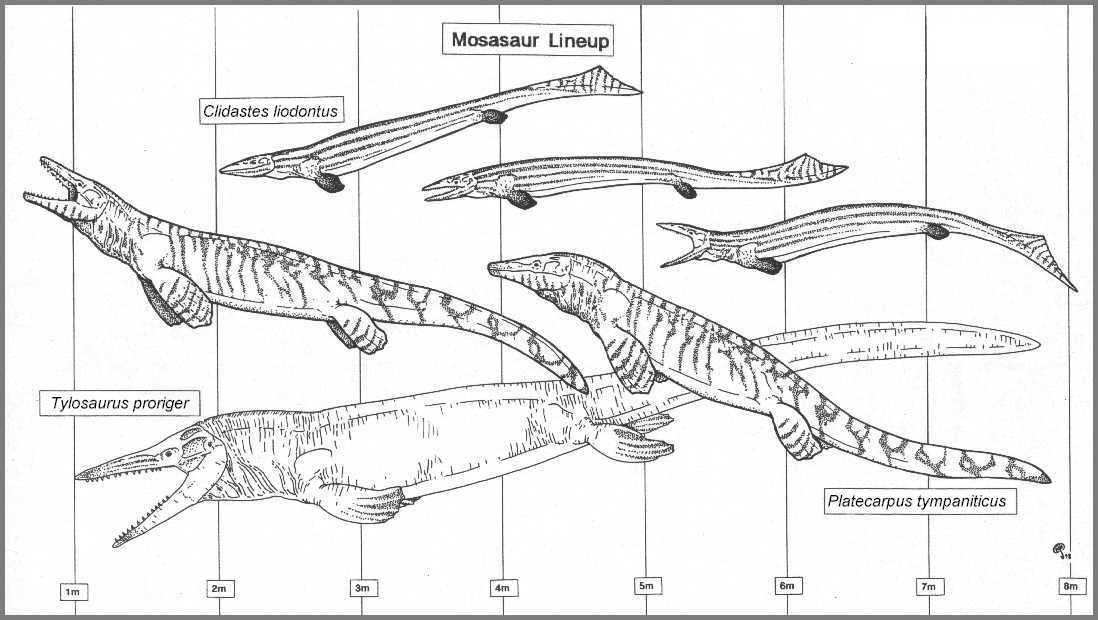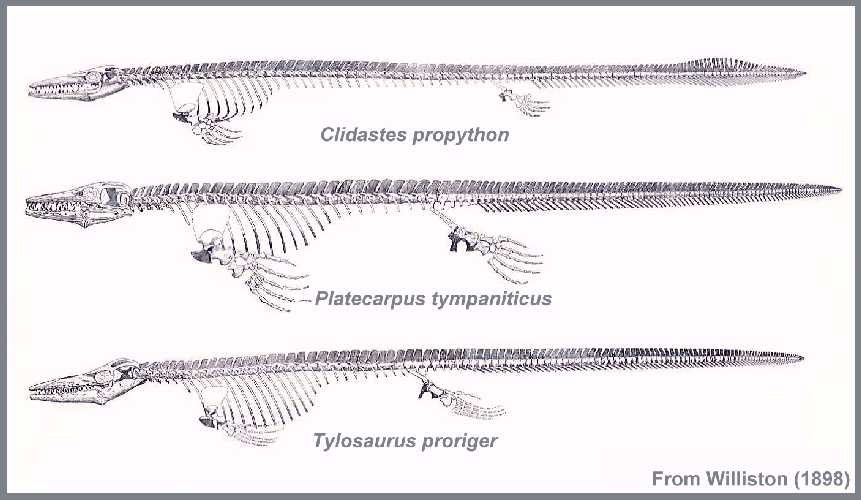
|
Above: A comparison of the three most common mosasaurs from the Smoky Hill Chalk. Copyright © 1999 by Russell Hawley; used with permission of Russell Hawley.
THE MOSASAUR MUSEUM
A virtual collection of mosasaur specimens from Kansas and elsewhere
Written and Illustrated by Mike Everhart; Copyright © 2000-2009
Updated 07/18/2009
While mosasaur remains are found from Northern Canada to the islands off the coast of Antarctica, in Sweden, the Netherlands and elsewhere in Europe, South America, Africa, Australia and New Zealand, some of the best specimens have come from the Niobrara formation of the Midwest United States. Many of those were found in Kansas. This virtual museum showcases some of the variety to be found among mosasaurs as a group.
 |
LEFT: A drawing from Williston (1898) that shows the skeletons of three common species of mosasaurs from Kansas; Clidastes propython, Platecarpus tympaniticus and Tylosaurus proriger. Although these three species are shown about the same size in the drawing, in life, Clidastes was the smallest (about 12-15 feet); Platecarpus was the next largest (about 24 feet) and Tylosaurus was the largest (30 plus feet). |
The specimens in the virtual museum are arranged in four collections: Clidastes, Platecarpus, Tylosaurus, and Mosasaurus (including some other genera). You can go directly to the collections by clicking on the picture or wording below:
CREDITS: Many of the pictures from the Sternberg Memorial Museum, Fort Hays State University, Hays, Kansas, were scanned from Bruce Schumacher's Master's Thesis, "Biostratigraphy of Mosasauridae (Squamata, Varanoidea) from the Smoky Hill Chalk Member, Niobrara Chalk (Upper Cretaceous) of Western Kansas" (1993), and used with his permission.